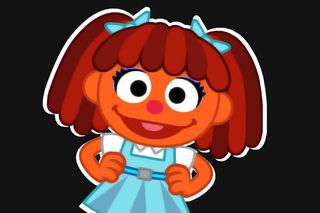
Kids Need More Strong, Female Characters in the Shows They Watch
Media can have a powerful impact on challenging gender norms.

India is home to 165 million children, out of which 79 million are girls. Gender discrimination starts right from the time when the child is born.
This is clear from the Census of India 2011 findings which reveal a deficit of 7 million girls, compared to boys, in the 0–6 age group. A pan-India online survey, conducted by Sesame Workshop India, of 510 parents with children age 0-8 years, shows the drivers of this disparity: One in three parents surveyed believed a son’s opinion is more important than a daughter’s; that it is more important to send a son to an English-medium school, than a daughter; and that a son is more desirable than a daughter. In many households, these attitudes manifest in less access to food and nutrition, in fewer opportunities for education, for girls.
But there are subtler versions of these beliefs. As children grow, they imbibe social stereotypes. “Boys don’t cry!” “That’s a boy’s sport!” “Only girls play with dolls!” “Girls must learn to cook!” “You can’t lose to a girl!” These are some common ‘rules’ for children given by Indian parents and caregivers. As a result, children start internalizing gender norms from their earliest years and start viewing their own actions and abilities through a socially-prescribed gender lens, which works to the disadvantage of girls and, eventually, all of society.
It is time to free our children from these restrictive gender norms; it’s time to reclaim “being a girl” from an insult to a point of pride (as P&G’s #LikeAGirl campaign last year calls for). It is time to raise children who believe that both boys and girls can grow up to be what they like, or both can help around the home, play any sport or play with dolls, and irrespective of their gender can cry when in pain.
So, how do we break these gender norms?
As they say, it all begins at home. Young children need positive role models to inform their ideas of gender and ability. These role models can unpack notions around gender for little children in their formative years, questioning the gender tags on actions and activities like cooking, crying, leading a sports team and finding engineering solutions. It is crucial for the caregivers to become these role models for children and start questioning the gender tags that they live and impose on young minds.
Additionally in this ‘Age of the Screen,’ children receive most of their information from television or mobile phones. Exposure to content and fictional role models that challenge gender norm can help seed an alternate narrative in children’s minds.
However, in reality, most television shows for children in India do not portray girls in lead roles; Galli Galli Sim Sim’s 5-year-old female muppet, , and Dora, from Dora The Explorer, are two of few characters who show children and their caregivers just how much a girl can express, do, aspire and achieve.
Instead, most children’s shows are male-dominated, aggressive in tone and often reinforce stereotypes. Our parent survey shows two in three parents agree that TV shows for children have more male role models than females and 78% parents feel the need for stronger female characters in children’s TV shows. Since mass media has the potential to reach the largest number of children, it is important that media and content developers closely consider the example they are setting for young minds. It is also the responsibility of parents to ensure their children watch age-appropriate, positive content on television that can challenge these existing stereotypes.
In a society rife with unequal rules and disparate opportunities, it is important to start lessons of growing up equal in the formative years. It’s important to tell our little boys and girls that every child can cook, every child can be good at math, any child can play with dolls, every child can dream of visiting the moon and that every child can grow smarter, stronger and kinder.
Ira Joshi is the vice-president for education and research at Sesame Workshop India, which produces Galli Galli Sim Sim, the Indian version of the American children's TV show, Sesame Street.
Related


The Night Shift: A Podcast Series About Women Who Go to Work After Dark
